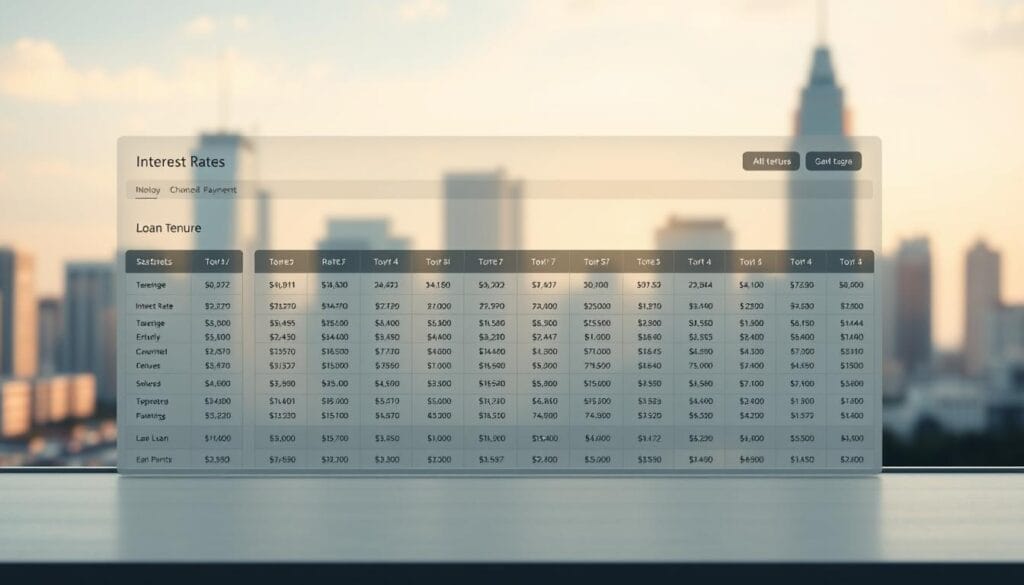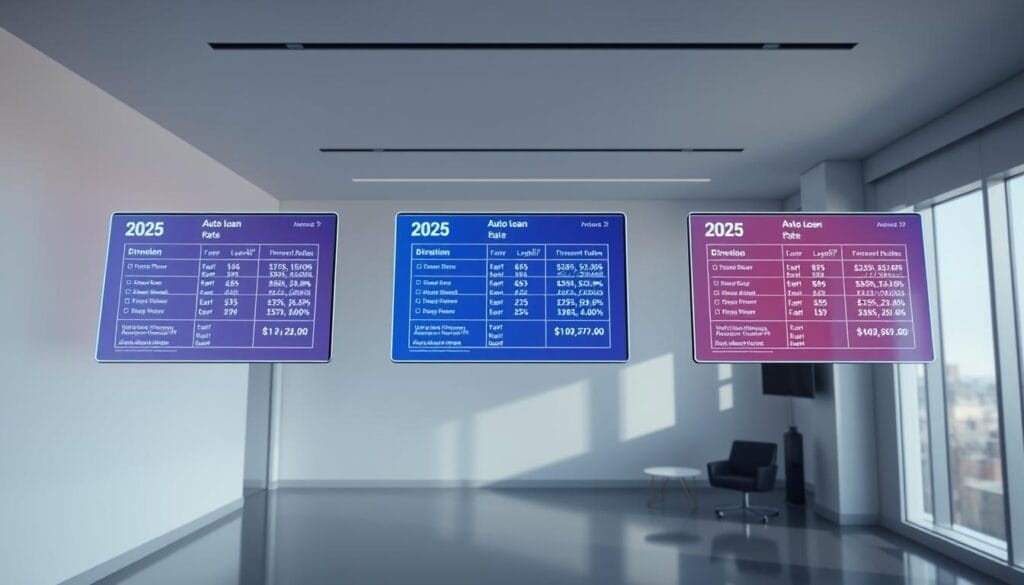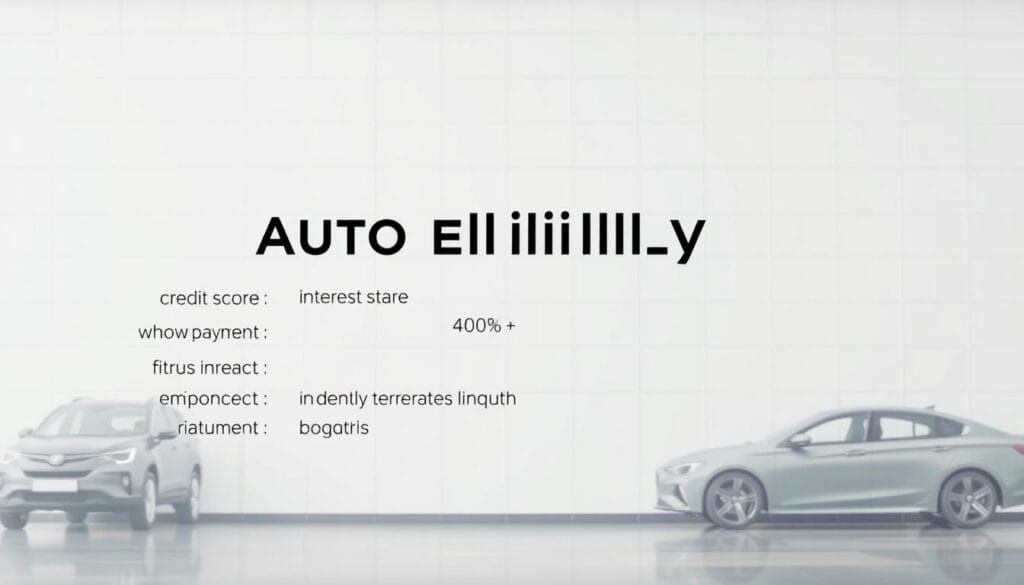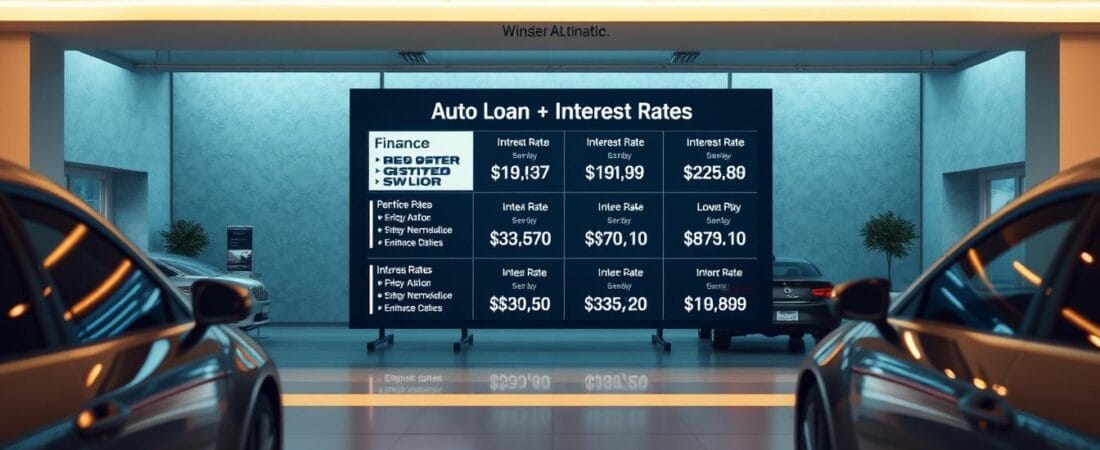Did you know that financing a vehicle in 2025 could cost you significantly less than in previous years? According to projections, the average APR for new car financing is expected to drop to as low as 4.09% for shorter terms, offering a more affordable option for buyers. This shift marks a notable change in the lending landscape, making it an ideal time to explore your options.
Navy Federal, a leading financial institution, has already outlined its tiered APR structure for 2025, ranging from 4.09% for 36-month terms to 7.59% for extended 85-96 month plans. These rates are tailored for vehicles under 7,500 miles, ensuring competitive pricing for newer models. Additionally, loans exceeding $30,000 for longer terms come with specific requirements, emphasizing the importance of planning your purchase carefully.
As the market evolves, understanding these trends can help you secure the best deal. Whether you’re eyeing a 2025 model or considering a longer repayment period, staying informed is key. For more details on terms and conditions, visit our dedicated page.
Key Takeaways
- Projected APR for 2025 starts at 4.09% for shorter terms.
- Navy Federal offers tiered rates from 4.09% to 7.59% based on loan duration.
- Minimum $30,000 requirement for loans extending 85-96 months.
- 2025 model year vehicles qualify for the most competitive rates.
- Compare 2025 rates with historical averages for better decision-making.
Introduction to Auto Loan Rates for New Cars

The cost of borrowing for vehicles is expected to shift significantly in 2025. Understanding these changes can help you make informed decisions and save money over time. With projected lower interest rates, buyers have a unique opportunity to secure favorable terms.
Why Auto Loan Rates Matter in 2025
Interest rates play a crucial role in determining the overall cost of financing. A lower annual percentage rate (APR) can reduce your monthly payment and save you thousands over the life of the loan. For example, a $20,000 loan at 4.09% APR results in a $593 monthly payment over 36 months.
Even a small increase in the interest rate can have a big impact. A 100 basis point rise adds about $27 to the average monthly payment. This highlights the importance of securing the best possible rate.
How Auto Loan Rates Affect Your Monthly Payments
Your credit score is a key factor in determining the interest rate you qualify for. Higher credit tiers typically receive lower rates, while lower tiers may face higher costs. For instance, a 48-month term on a $35,000 loan could cost significantly less than a 72-month term due to differences in interest accumulation.
Additionally, the Federal Reserve’s policies in 2025 will influence the lending landscape. Staying informed about these trends can help you plan your purchase effectively and avoid unnecessary expenses.
Understanding Auto Loan Rates for New Cars

The landscape of vehicle financing is evolving, with 2025 bringing new considerations for buyers. To secure the best terms, it’s crucial to understand the factors that influence your financing options. These include your credit history, the loan term, the vehicle’s age and mileage, and the amount financed.
What Determines Auto Loan Rates?
Several elements shape the interest you’ll pay on a vehicle. Your credit history is the most significant factor, accounting for 35% of the rate determination. Borrowers with a FICO score of 720 or higher typically qualify for lower rates compared to those with scores between 650-719.
The loan term also plays a role, making up 25% of the rate calculation. Shorter terms often come with lower interest, while longer terms may increase costs. Additionally, the vehicle’s age and mileage account for 20% and 15%, respectively. Newer models with fewer miles generally qualify for better rates.
Fixed vs. Variable Interest Rates
When financing a vehicle, you’ll choose between fixed and variable interest rates. A fixed rate, such as 4.09%, remains constant throughout the loan term, providing predictable payments. In contrast, a variable rate, like 3.89%, can fluctuate based on market conditions, offering potential savings but with added risk.
Understanding these options is key to making an informed decision. For more insights on managing your finances, explore our guide on micro-investing platforms.
Comparing Auto Loan Rates in 2025

Comparing financing options in 2025 can help you secure the most favorable terms. With projected lower interest rates, understanding the differences between lenders is essential. This section highlights top financial institutions and provides actionable tips for effective comparison.
Top Lenders Offering Competitive Rates
Navy Federal and California Coast Credit Union are among the top lenders offering competitive financing options in 2025. Navy Federal provides a 90-day preapproval window, giving buyers flexibility in their purchase timeline. Meanwhile, California Coast CU partners with TrueCar to offer exclusive discounts, making it a strong contender for cost-conscious buyers.
When comparing these lenders, consider the annual percentage rate (APR) and loan terms. For example, Navy Federal offers a 4.09% APR for 36-month terms, while California Coast CU’s rate is slightly higher at 4.28%. These differences may seem small but can significantly impact your monthly payments and overall cost.
How to Compare Rates Effectively
To compare financing options effectively, start by reviewing rate sheets from multiple lenders. Focus on the APR, as it reflects the true cost of borrowing. Normalize comparisons by ensuring all quotes are for the same loan term and amount.
Be aware of hidden fees, such as origination charges or prepayment penalties. These can add to the overall cost and should be factored into your decision. For more insights on managing your finances, explore our guide on low-fee robo-advisors.
Finally, consider your credit score and financial history. Lenders often offer better terms to borrowers with higher credit tiers. By understanding these factors, you can make an informed decision and secure the best deal.
Factors That Influence Your Auto Loan Rate

Securing the best financing terms in 2025 depends on several key factors. Understanding these elements can help you negotiate better deals and save money over time. From your credit score to the model year of the vehicle, each aspect plays a crucial role in determining your rate.
Credit Score and Financial History
Your credit score is one of the most significant factors in determining your financing rate. Borrowers with a FICO score of 720 or higher typically qualify for the lowest rates. For example, Navy Federal offers its best APR of 4.09% to those in this credit tier.
On the other hand, a score of 660 could result in a higher rate, increasing your monthly payments. It’s essential to review your credit report and address any issues before applying.
Loan Term and Amount
The loan term and amount also influence your rate. Shorter terms, such as 36 months, often come with lower interest compared to longer terms like 84 months. For instance, a $40,000 loan over 60 months will cost less in interest than the same amount spread over 72 months.
Additionally, loans exceeding $30,000 for extended terms may have specific requirements. Planning your purchase carefully can help you avoid unnecessary costs.
Vehicle Model Year and Mileage
The model year and mileage of the vehicle also impact your rate. Newer models, such as 2025 vehicles, often qualify for more competitive rates compared to older models. For example, a 2025 model may have a lower APR than a 2024 carryover.
Mileage brackets also matter. Vehicles with fewer than 7,500 miles typically receive better rates than those with 7,500-30,000 miles. Military discounts, such as a 0.25% APR reduction, can further enhance your terms.
How to Calculate Your Auto Loan Payments

Understanding how to calculate your financing payments is essential for making informed decisions in 2025. Knowing the exact monthly payment and total interest can help you budget effectively and avoid surprises.
Using Financing Calculators
Financing calculators are powerful tools that simplify the process of determining your monthly payment. For example, Navy Federal’s calculator shows that a $1,000 loan amount over 66 months at 5.88% APR results in a $17.78 monthly payment.
These calculators use the amortization formula, which factors in the principal, annual percentage rate, and loan term. By inputting these details, you can quickly estimate your payments and compare different scenarios.
Understanding Annual Percentage Rate (APR)
The annual percentage rate (APR) reflects the true cost of borrowing, including fees and interest. For instance, a $45,000 loan at 5% APR will cost significantly less than the same loan at 7% APR over the same term.
It’s important to note that APR incorporates fees, such as origination charges, into the calculation. This makes it a more accurate measure than the interest rate alone. For more insights on managing your finances, explore our guide on debt repayment calculators.
Comparing simple interest and precomputed interest is another key aspect. Simple interest is calculated on the remaining balance, while precomputed interest is based on the total loan amount. Understanding these differences can help you choose the best option for your needs.
Eligibility Requirements for Auto Loans

Meeting eligibility criteria is the first step toward securing favorable financing terms in 2025. Lenders evaluate several factors, including your credit score, income, and employment history, to determine your qualification. Understanding these requirements can help you prepare your application and improve your chances of approval.
Credit Score Requirements
Your credit score is a critical factor in the approval process. Most lenders, including Navy Federal, require a minimum score of 660 for standard terms. Borrowers with scores above 720 often qualify for the lowest interest rates.
For those with limited credit history, alternative data like rent or utility payments may be considered. This approach helps lenders assess your financial responsibility more comprehensively.
Income and Employment Verification
Lenders verify your income to ensure you can meet monthly payments. Traditional employment is preferred, but gig economy workers can provide documentation like 1099 forms or bank statements.
Debt-to-income (DTI) ratios also play a role. Most lenders prefer a DTI below 43%, though some may accept up to 50% with strong compensating factors. Adding a co-signer can improve your approval odds and terms, as highlighted in vehicle financing 101.
How to Apply for an Auto Loan

Applying for vehicle financing in 2025 is simpler than ever, with streamlined processes and digital tools. Whether you’re working directly with a lender or through a dealer, understanding the steps can save you time and ensure a smooth experience.
Step-by-Step Application Process
The first step is to gather all necessary information, including your vehicle identification number (VIN), proof of insurance, and employment details. Navy Federal’s auto loan application, for example, can be completed in less than 10 minutes online or via their mobile app.
Once submitted, the application is reviewed, and funding typically occurs within 24-72 hours. If you’re working with a dealer, they can validate your preapproval using a 4-digit code provided by the lender.
Documents You’ll Need
To complete your application, you’ll need specific documents. These include recent pay stubs, W-2 forms, and a signed purchase agreement. Having these ready can speed up the process and reduce delays.
Additionally, lenders may require proof of residence and a valid driver’s license. Ensuring all documents are accurate and up-to-date is crucial for a successful financing experience.
Rate lock periods are another important consideration. Most lenders, including Navy Federal, offer rate locks for 30-60 days, giving you time to finalize your purchase without worrying about rate changes. For more details on the process, visit Navy Federal’s auto loan application page.
Benefits of Preapproval for Auto Loans
Securing preapproval before visiting a dealer can significantly enhance your purchasing power. This process involves a lender reviewing your financial details to determine how much you can borrow and at what rate. With a 90-day validity period, preapproval gives you ample time to shop for the right vehicle without rushing.
Why Get Preapproved?
Preapproval offers several advantages over preselection. While preselection provides an estimate, preapproval gives you a concrete loan amount and rate based on a hard credit inquiry. This hard inquiry is consolidated within a 14-45 day window, minimizing its impact on your credit score.
Additionally, preapproval helps you set a realistic budget. Knowing your maximum borrowing limit ensures you focus on vehicles within your price range. This clarity can also help you avoid unnecessary add-ons or upselling tactics at the dealership.
How Preapproval Helps You Negotiate
Having a preapproved offer positions you as a serious buyer. Dealers often view preapproved customers as “cash buyers,” which can give you leverage to negotiate better terms. For example, some dealers may match or beat your preapproved rate to secure your business.
Military discounts and other incentives can further enhance your terms. By verifying these discounts during the preapproval process, you can maximize your savings. For more insights, explore the advantages of getting pre-approved for a car.
Tips for Securing the Best Auto Loan Rates
Securing the best financing terms in 2025 requires strategic planning and actionable steps. Whether you’re improving your credit score or negotiating with lenders, understanding the process can save you money and time.
Improving Your Credit Score
Your credit score plays a significant role in determining your interest rate. A 100-point improvement in your FICO score can reduce your APR by up to 1.5%. Start by reviewing your credit report for errors and addressing any discrepancies.
Consider implementing a 60-day credit repair strategy. Pay down outstanding balances, avoid new credit inquiries, and ensure timely payments. These steps can boost your score and improve your financing options.
Negotiating with Lenders
Negotiation is key to securing favorable terms. Compare offers from credit unions and banks, as credit unions often provide lower rates. Be prepared to discuss your financial history and highlight your strengths as a borrower.
Refinancing is another option to explore post-purchase. If your credit score improves or market rates drop, refinancing can lower your monthly payments. Additionally, analyze lease buyout financing considerations if you’re transitioning from a lease to ownership.
Relationship discounts, such as a 0.25% APR reduction for setting up direct deposit, can further enhance your terms. For more insights, explore our guide on AI in credit risk assessment.
Conclusion
In 2025, the financing landscape is set to offer more opportunities for cost-effective vehicle purchases. Projections indicate lower rates for shorter terms, making it an ideal time to explore your options. Optimizing your credit score remains crucial, as it directly impacts the terms you qualify for.
Emerging trends, such as incentives for electric vehicle financing, are reshaping the market. Staying informed about these developments can help you secure the best deal. Tools like rate monitoring alerts can keep you updated on favorable rates as they become available.
Before applying, ensure you have a checklist ready. This includes reviewing your credit report, comparing lenders, and understanding the total cost of borrowing. For more insights, explore average car loan interest rates by credit to make informed decisions.

